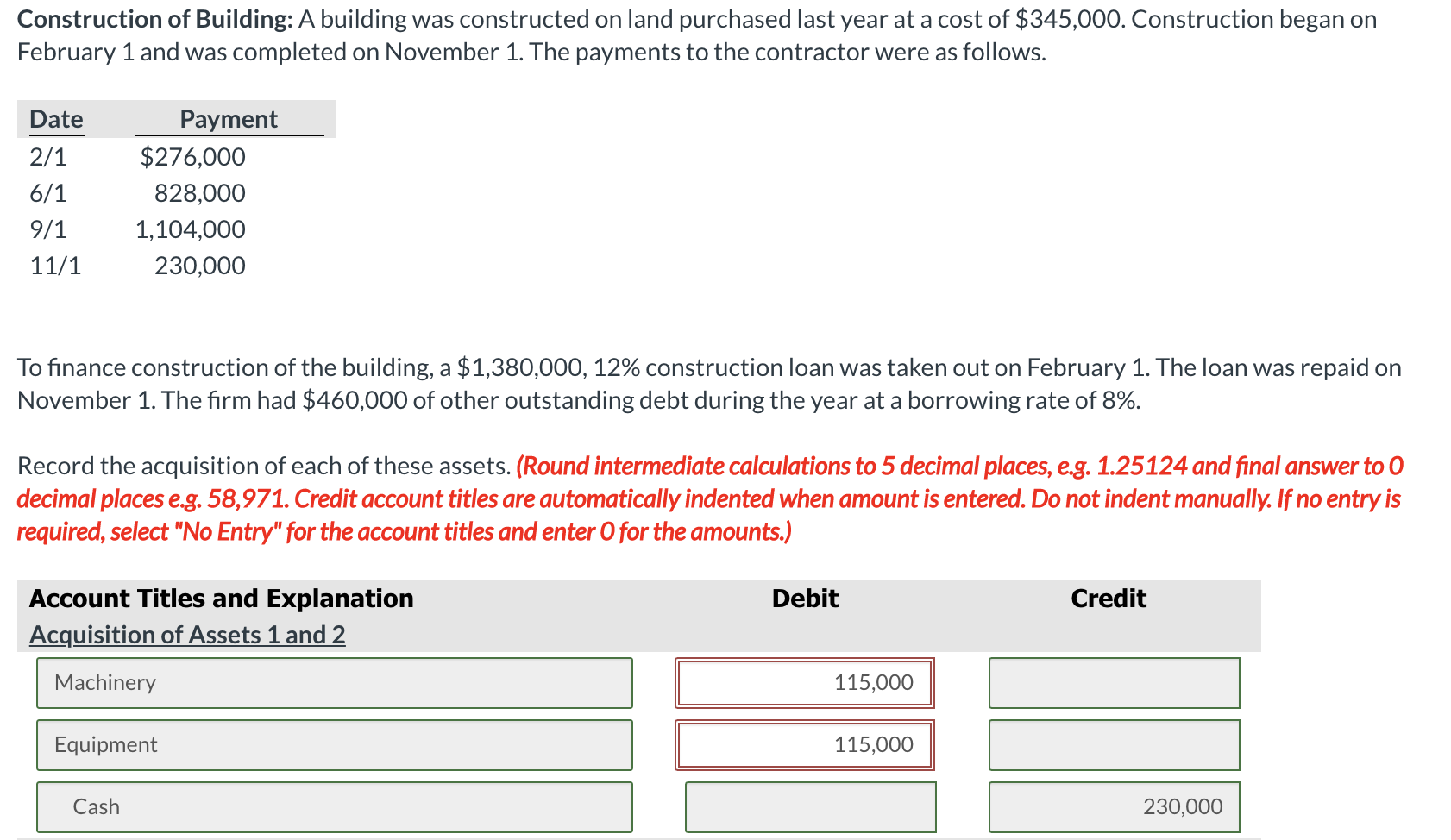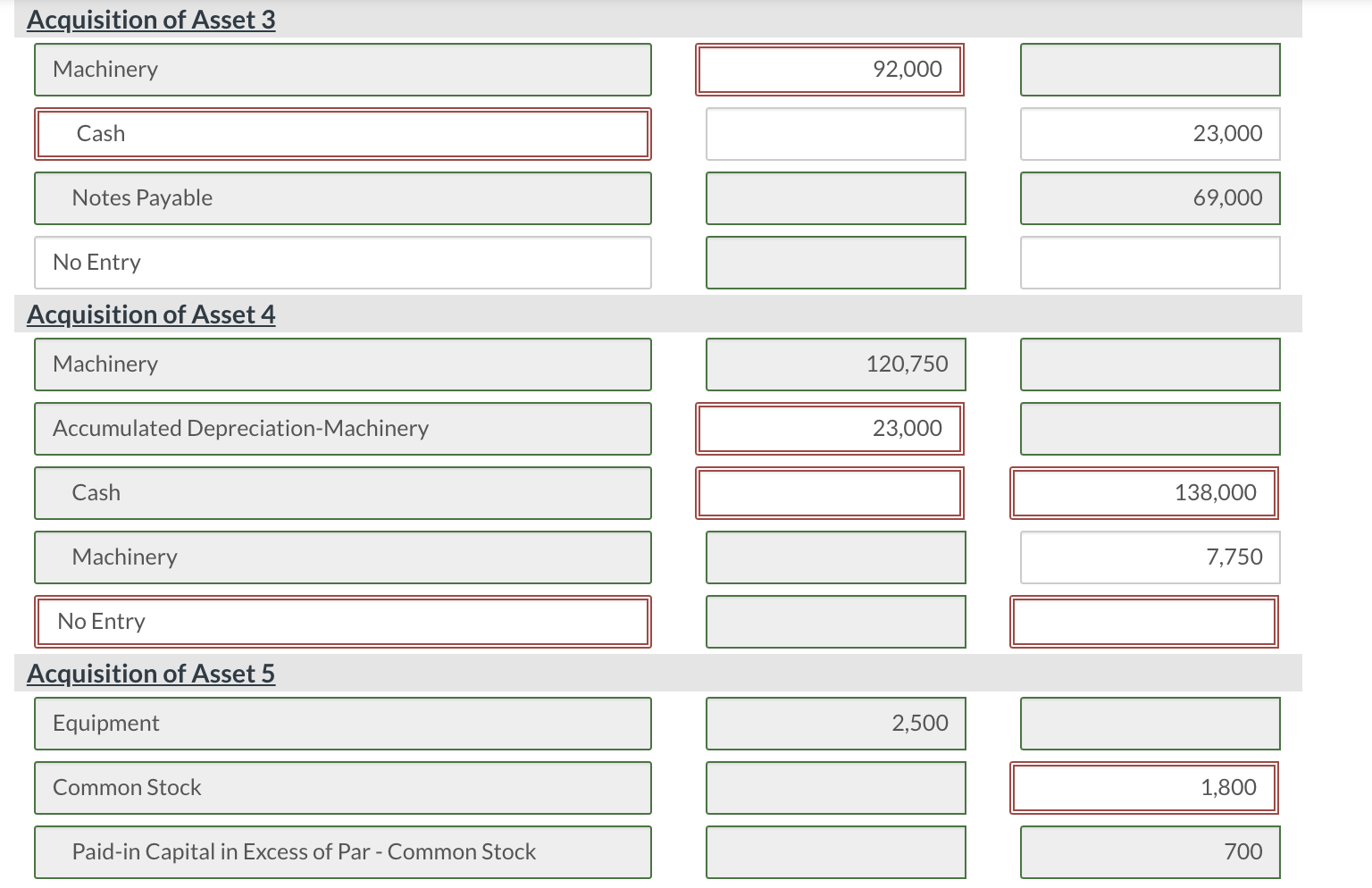



Sage Industries purchased the following assets and constructed a building as well. All this was done during the current year. Assets 1 and 2: These assets were purchased as a lump sum for $230,000 cash. The following information was gathered. Description Machinery Equipment Initial Cost on Seller's Books $230,000 138,000 Depreciation to Date on Seller's Books $115,000 23,000 Book Value on Seller's Books $115,000 115,000 Appraised Value $207,000 69,000 Asset 3: This machine was acquired by making a $23,000 down payment and issuing a $69,000, 2-year, zero-interest-bearing note. The note is to be paid off in two $34,500 installments made at the end of the first and second years. It was estimated that the asset could have been purchased outright for $82,570. Asset 4: This machinery was acquired by trading in used machinery. (The exchange lacks commercial substance.) Facts concerning the trade-in are as follows. Cost of machinery traded Accumulated depreciation to date of sale Fair value of machinery traded Cash received Fair value of machinery acquired $230,000 92,000 184,000 23,000 161,000 Asset 5: Equipment was acquired by issuing 100 shares of $18 par value common stock. The stock had a market price of $25 per share. Construction of Building: A building was constructed on land purchased last year at a cost of $345,000. Construction began on February 1 and was completed on November 1. The payments to the contractor were as follows. Date 2/1 6/1 9/1 11/1 Payment $276,000 828,000 1,104,000 230,000 To finance construction of the building, a $1,380,000, 12% construction loan was taken out on February 1. The loan was repaid on November 1. The firm had $460,000 of other outstanding debt during the year at a borrowing rate of 8%. Record the acquisition of each of these assets. (Round intermediate calculations to 5 decimal places, e.g. 1.25124 and final answer to O decimal places e.g. 58,971. Credit account titles are automatically indented when amount is entered. Do not indent manually. If no entry is required, select "No Entry" for the account titles and enter O for the amounts.) Debit Credit Account Titles and Explanation Acquisition of Assets 1 and 2 Machinery 115,000 Equipment 115,000 Cash 230,000 Acquisition of Asset 3 Machinery 92,000 Cash 23,000 Notes Payable 69,000 No Entry Acquisition of Asset 4 Machinery 120,750 Accumulated Depreciation-Machinery 23,000 Cash 138,000 Machinery 7,750 No Entry Acquisition of Asset 5 Equipment 2,500 Common Stock 1,800 Paid-in Capital in Excess of Par - Common Stock 700 (To record acquisition of Office Equipment) Buildings Cash No Entry No Entry










